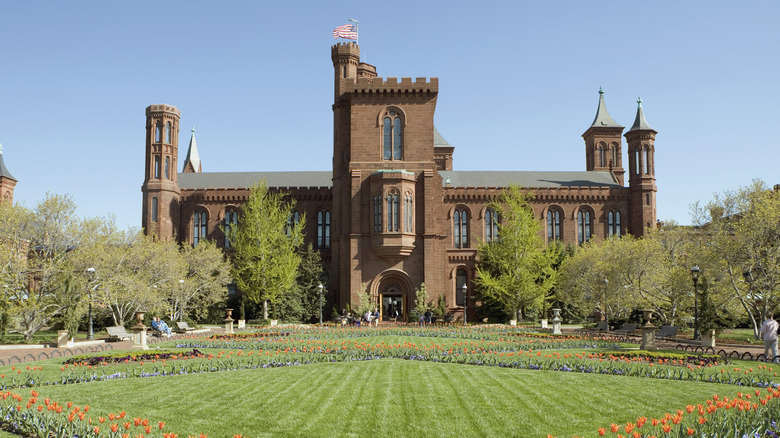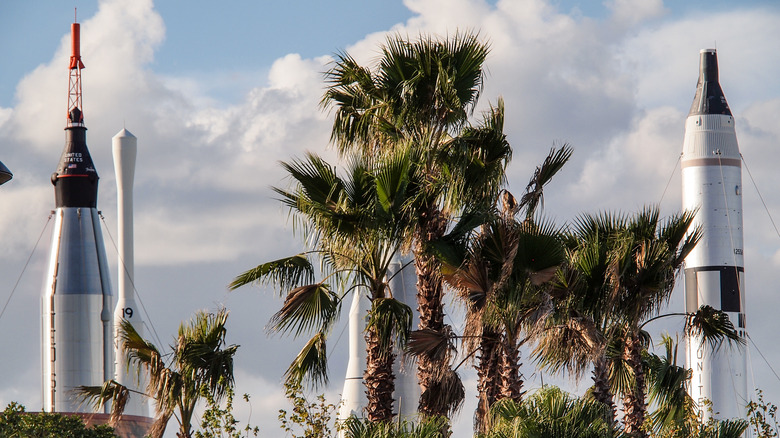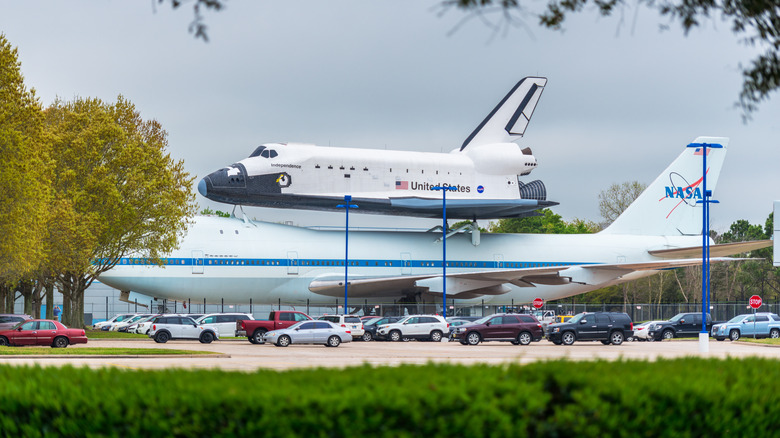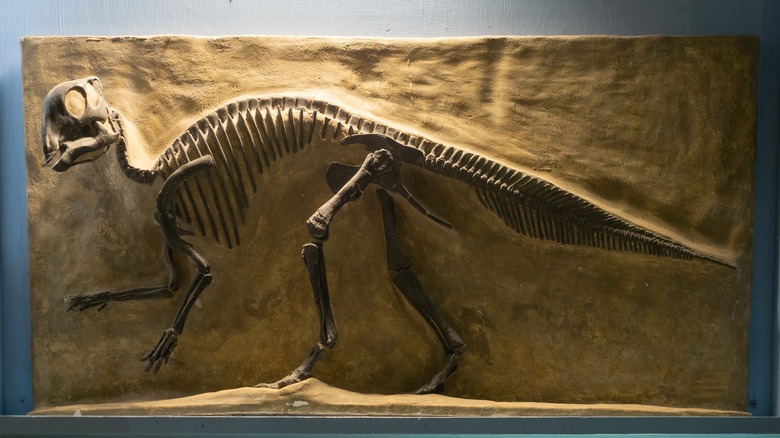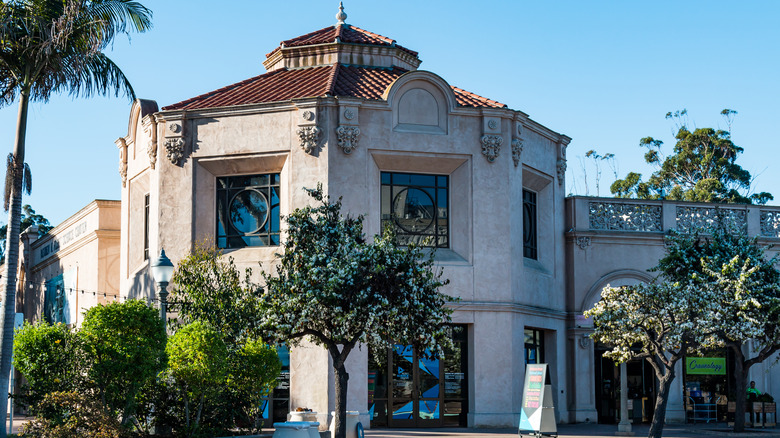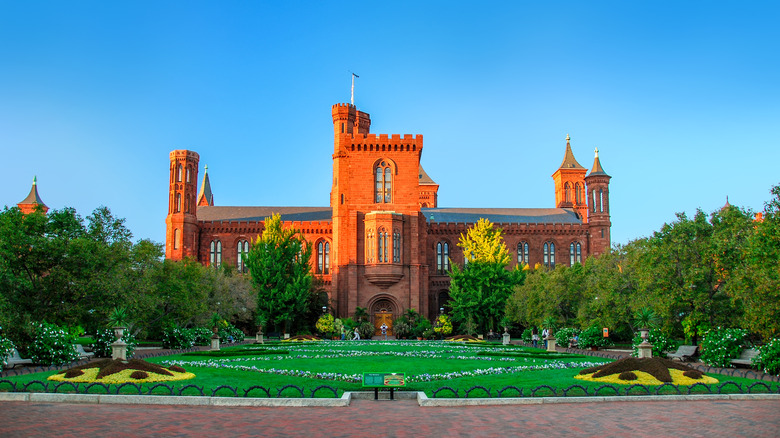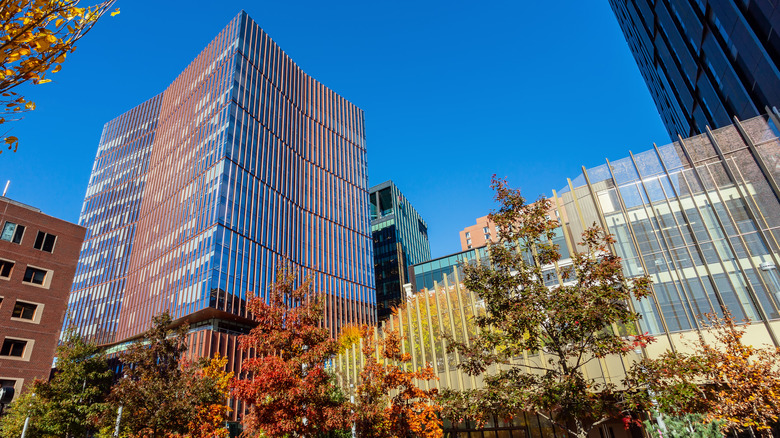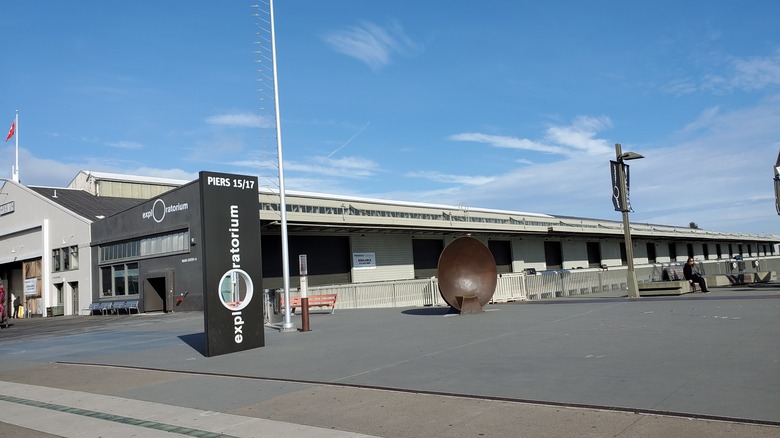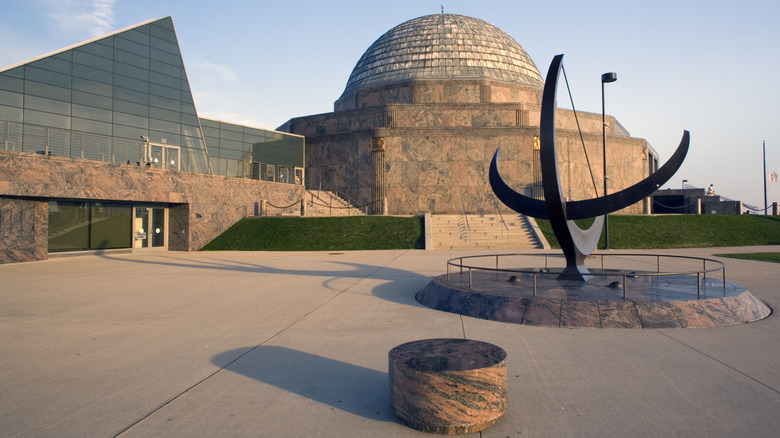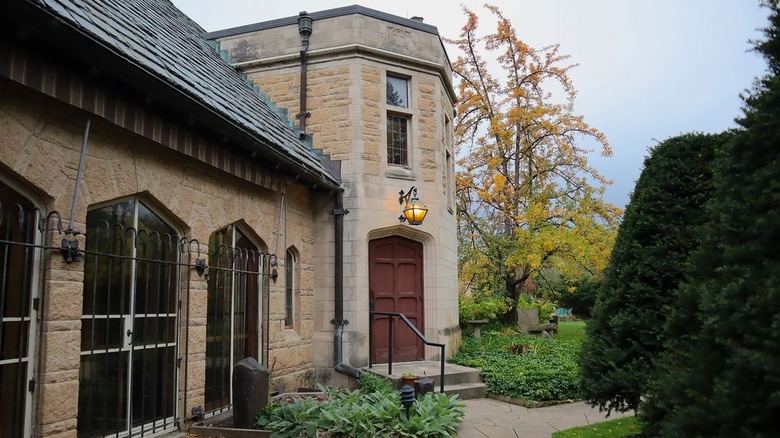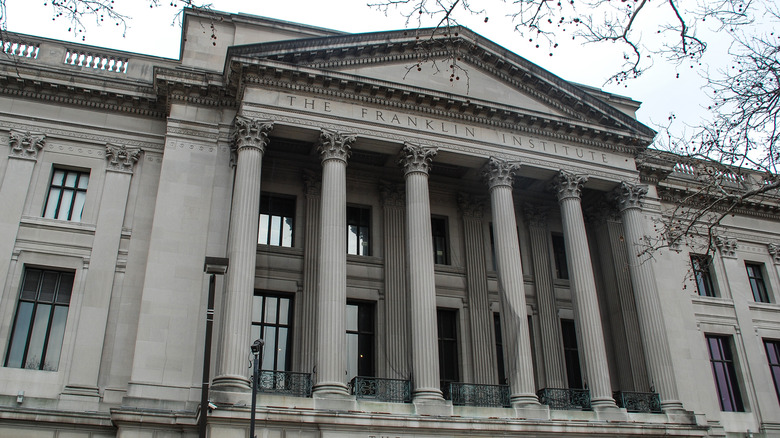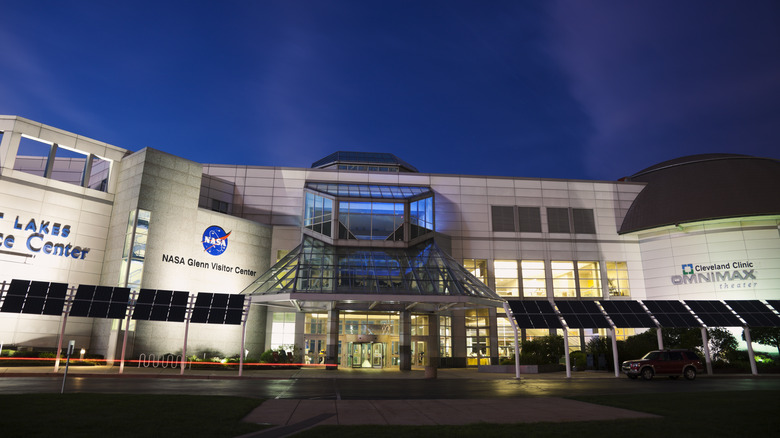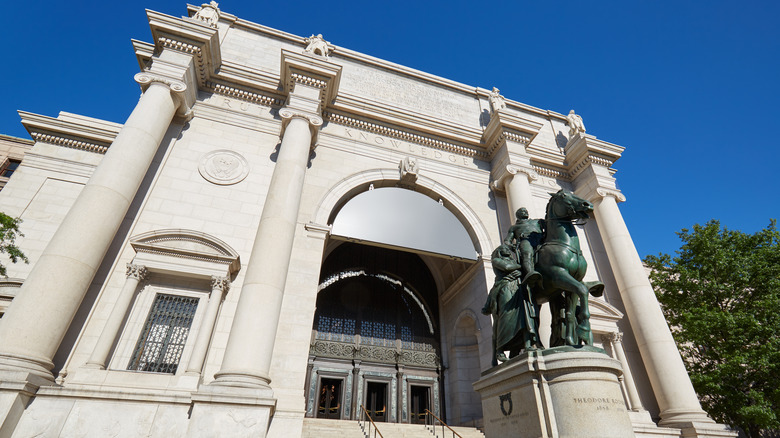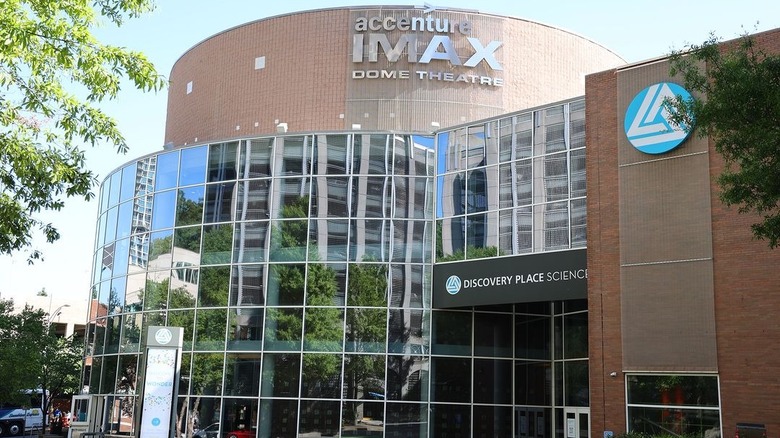14 Spots In America Perfect For Science Enthusiasts To Visit, According To Reviews
Science is an ever-evolving field, and we're constantly discovering new things as years go by. Not only can these findings teach us more about the past, but also what to expect in the future. So it's no wonder why science is a popular topic, even among the general public.
While you can always read articles in your own home, it's better (and more fun!) to get hands-on with interactive experiences. Luckily, there are several places that can teach us more about the wonders of science, and a good portion of them are located in the United States.
Whether you're looking for something local or somewhere to visit while on vacation, you've got plenty of options to expand your knowledge, and almost all of these places are family-friendly too, meaning you can bring the entire family along on an informative adventure. Not sure where to start? We'll show you the best spots in the nation to satisfy your scientific curiosities, according to reviews of science enthusiasts about these popular places.
Kennedy Space Center in Merritt Island, Florida
Kennedy Space Center opened in the summer of 1962, and its official name is John F. Kennedy Space Center. It's the main launch center for the U.S. and has been since 1968. It was the location for the Apollo launch operation, as well as Skylab. Every year, this NASA-owned space center attracts over 1.7 million visitors, and when you see what it has to offer, you'll realize why.
Across 144,000 acres, real-life astronauts and other scientists work on things to further space exploration. You'll want to focus your time on the Kennedy Space Center Visitor Complex, though. The Visitor complex is divided into five mission zones, each with its own unique exhibits and displays. There are also two IMAX theaters to watch engaging videos. From here, you can also take bus tours to learn more about the spaceport.
You can also participate in the Shuttle Launch Experience and the Astronaut Training Experience to see what it's like to work for NASA. Or, to get a glimpse into life outside of Earth, you could also attend daily presentations given by veteran NASA astronauts. On Google Reviews, one guest said that "visiting NASA fulfilled one of my childhood dreams," while another added, "there was enough to do to keep us busy for the entire day."
Space Center Houston in Houston, Texas
The Space Center Houston is the official visitor center of NASA's Johnson Space Center. One of the area's biggest attractions, the Space Center is also Smithsonian Affiliate. The center first opened in 1992 and gets 1.25 million visitors a year — and for good reason. The 250,000-square-foot complex boasts hundreds of space artifacts, such as its spacesuit collection, and has the world's largest collection of moon rocks, which you can view along with other lunar samples.
The center also offers plenty of experiences and exhibits. You can take the NASA tram tour, which gives you a behind-the-scenes look at training facilities and other key areas. Or, you can go to Independence Plaza to go inside the Independence shuttle replica and the original NASA 905 shuttle carrier aircraft, which it sits atop. It's the only place in the world where you can see the inside of such crafts, so it's quite special. Like at the Kennedy Space Center, you can also visit NASA facilities and meet astronauts if you pay to upgrade your experience.
Montana Dinosaur Center in Bynum, Montana
If you've ever wanted to know what a paleontologist does on a typical day, then head over to the Montana Dinosaur Center. The museum gallery is only open from May 1 to September 30, so plan accordingly. However, you can visit outside of these months by making an appointment, though some areas may be temporarily closed for renovations and upgrades.
The museum features a 137-foot-long Seismosaurus model, which set a Guinness World Record as the largest one. You can also view baby dinosaur fossils and other exhibits that'll teach you all about the prehistory of both the region and North America. Those who want a true hands-on experience can also book a dig expedition, which is available from mid-June to September. By joining these guided groups, you'll be a paleontologist for the day and conduct actual research.
On Tripadvisor, one guest said, "The Dino Center team is comprised of brilliant, engaging and funny people who really make the day a blast with cool stories about the area and their finds." There's no minimum age requirement for the digs, so you can make it a family outing if you wish. Note that all minors need to be accompanied by parents or guardians, and unfortunately, if you uncover any fossils, they must go into the center's Collections room. You aren't allowed to keep anything you discover.
Fleet Science Center in San Diego, California
Fleet Science Center is a fantastic place to explore STEM (science, technology, engineering, and math) subjects. It first opened to the public in March of 1973, but it had already existed for years before that. The idea for the science center first came about in 1957, the result was its innovative and impressive planetarium, known as the Heikoff Giant Dome Theater.
Breaking from traditional designs, the planetarium features a slightly tilted dome that makes visitors feel like they're floating in space. Here, you can watch IMAX films and digital planetarium shows. Besides the planetarium, the Fleet Science Center has over 100 interactive exhibits to get lost in.
A huge benefit of making a trip to the Fleet Science Center is that it's located in the middle of Balboa Park. Not only are there other museums in the park, but also world-renowned gardens and attractions. If you're looking to plan a weekend science trip, you even create a one-day San Diego Zoo itinerary after exploring the Fleet Science Center when visiting Balboa Park.
Smithsonian Institution in Washington, D.C.
Located in Washington, D.C., The Smithsonian Institution is one of the world's biggest scientific learning centers. It was first established in 1846 by Englishman James Smithson, who left his funds for The Smithsonian. What's interesting is that Smithson had never been to the United States before, yet he left a sizable sum of money (his entire estate) to help establish a center dedicated to knowledge. No one really knows why he made the decision, but we're fortunate he did, as his funding resulted in an amazing institution.
The Smithsonian Institution complex comprises 21 museums and nine research centers, so you can learn about a wide range of science topics. You can also visit the National Zoo, a popular free thing to do in Washington, D.C. Other notable locations include the National Air and Space Museum, the National Museum of American History, the National Postal Museum, and the Smithsonian Gardens.
It can be overwhelming to consider so many possibilities for your day out, so it's a good idea to use the Virtual Visitor Center to help plan your visit. There's a handy "My Visit" list, where you can add museums and specific exhibitions. When you're done, you can email the list to yourself and/or others.
MIT Museum in Cambridge, Massachusetts
A lot of our work is slowly becoming automated through robotics and artificial intelligence (AI), making it important to learn about and understand these subjects. Otherwise, you may get left behind as the world advances. To ensure you stay up-to-date, take a trip to the MIT Museum.
This museum is affiliated with the Massachusetts Institute of Technology (MIT) and was established in 1971. You'll witness the blending of technology with art, as well as soak up interesting information about future possibilities. In addition to robotics and AI, the MIT Museum features exhibits about architecture and maritime history. On Google Reviews, Katya W. said the museum "offers truly unique and engaging exhibitions."
You can also learn about the university's history while you're here, and if you live in Cambridge, you can even gain free admission to the MIT Museum through the free Cambridge Resident Membership. You can sign up for it either online or at the museum itself.
Exploratorium in San Francisco, California
If you think the name "Exploratorium" means tons of fun for you, then you'd be right if you like to explore. As its name suggests, this museum in San Francisco offers hands-on experiences, and by combining science and art, the museum offers new ways to explore human perception, biology, and physics.
The Exploratorium touts itself as a public learning laboratory and was originally founded in 1969 by renowned experimental physicist Frank Oppenheimer. Before its current location on Piers 15 and 17, the museum was in the Palace of Fine Arts, until it was relocated to the Piers in 2013. Today, you'll find all the exhibits in Pier 15.
On any given day, there are hundreds of exhibits at The Exploratorium. What's interesting is that they're all built on-site in the shop, where you can view the staff hard at work. Based on guest feedback and constant innovation, the exhibitions are constantly worked on and swapped out. As a result, it's very likely that you'll see something different on each visit, even if you go to the museum often.
Adler Planetarium in Chicago, Illinois
The Adler Planetarium is well-known for its planetarium shows, in addition to its telescope viewing opportunities at the Doane Observatory and astronomy exhibits. You can also delve into the world of astrophysics here. The Adler Planetarium was founded in 1930, when a local businessman Max Adler heard about European planetariums. After touring one in Munich, Germany, he returned to the U.S. to create a special museum in Chicago. Now, every year, the museum gets over half a million visitors. Inside the planetarium, you can spend hours browsing the fascinating exhibits.
If you've got little ones, there's a dedicated space for them at the Planet Explorers area, or to tap into your creative side, head over to the Community Design Labs. The interactive areas will exercise your brain, and there's a child-friendly corner at the PlayLab, too. Other experiences in the Community Design Labs include Star Studio, Stargazers Hub, Red Rover Mars Activity Station, and Deeper Exploration.
The Bakken Museum in Minneapolis, Minnesota
Every day, we use devices that make our lives easier, and that's thanks to electricity. But do you truly understand how it works? If you'd like to better understand the technology that powers our lives, check out the Bakken Museum. The museum was founded in 1975 by Earl Bakken, who also founded Medtronic, a top company in medical technology. In this museum, you'll find an extensive history of electricity and magnetism, and its exhibits should be particularly interesting for those fascinated by physics and electrical engineering.
During your visit, immerse yourself in the interactive exhibits that blend science with the humanities. There are 2,000 scientific instruments to examine, and the museum is home to over 11,000 written works, which will keep your neurons firing. You can actually check out the manuscripts and journals for free online by contacting the museum. Plus, there's an entire exhibit on Mary Shelley's "Frankenstein," which should delight fans of the classic novel. You can also recreate Benjamin Franklin's experiments to better understand what he was thinking and what he discovered. On Google Reviews, Meghan I. said, "As a family, we had so much fun here! I wish we would've had more time!"
The Franklin Institute in Philadelphia, Pennsylvania
Benjamin Franklin is famous for being one of the nation's Founding Fathers, who also helped draft the Declaration of Independence. However, he's also known for his inquisitive mind as America's founding scientist, conducting numerous experiments and making significant discoveries. For example, he contributed to our understanding of electricity, which you can explore further at The Franklin Institute.
This museum was founded in 1824 as a learning institution focusing on the mechanic arts. Up until the early 1900s, The Franklin Institute held classes in mechanics and engineering and published research journals. It even had a high school. The U.S. saw several technological advancements here, but it wasn't until 1934 that the science museum opened to the general public.
When you go to the Franklin Institute, there are 12 permanent hands-on exhibits, which include experiences dedicated to electricity, robotics, the physics of air travel, and more. Today, there are still public lectures, so if you go at the right time, you'll gain valuable insights from prestigious speakers. Those who enjoy planetariums can also explore the Fels Planetarium.
National Museum of Nuclear Science and History in Albuquerque, New Mexico
There's no doubt that nuclear warfare is terrible. However, it's still an important topic to know about, and truthfully, a lot of the technology can be used for peace and good. So it's worth it to see what the National Museum of Nuclear Science and History has to show and tell.
Wanting to educate the public about the Atomic Age, the United States Congress first established the Sandia Atomic Museum in the Sandia Base in 1969. After the United States Department of Energy (DOE) took over in 1985, the museum received its charter six years later. Fast forward to the September 2001 terror attacks, and the museum shut down and relocated to Old Town Albuquerque's museum district for better security in 2002.
However, this didn't have adequate space, so a new museum was constructed in southwest Albuquerque and opened in 2009. This was the birth of the National Museum of Nuclear Science and History. This Smithsonian Affiliate offers you a comprehensive view of nuclear science, all the way from the past to the future. You'll get a good mix of permanent and temporary exhibits that'll have you thinking about nuclear power.
Great Lakes Science Center in Cleveland, Ohio
The towns on the Great Lakes are known for their majestic beauty and wide abundance of activities. Those interested in the area's environment can learn more at the Great Lakes Science Center, conveniently located in downtown Cleveland. You can advance your knowledge about physics, chemistry, and technology at this museum.
The Great Lakes Science Center first opened in 1996 and hosts one of 11 NASA Glenn Visitor Centers in the U.S. You can enjoy daily science demonstrations from the staff, and walk through permanent and temporary exhibits. In addition, the museum features an IMAX Dome theater, which spans six stories. According to the Great Lakes Science Center, the Cleveland Clinic Dome Theater features the "world's first giant dome three-projector, laser-illuminated projection system," giving you a fully immersive experience.
This museum also shows its dedication to STEM topics through its wind turbine. It was installed in 2006 and fulfills around 7% of the center's annual electrical needs. If you find this intriguing, then you can find out more about alternative energy by going through the hands-on exhibit.
American Museum of Natural History in New York, New York
Science buffs must put the American Museum of Natural History on their bucket list. It spans an astonishing 1.6 million square feet, containing 27 connected buildings. Inside them, there are 45 permanent exhibition halls, a library, a butterfly vivarium, and a planetarium. You'll find it in Theodore Roosevelt Park, so you can make a day of the area if the weather's nice.
This museum first popped up as an idea in naturalist Dr. Albert S. Bickmore's head, and he had a successful proposal in 1869. The American Museum of Natural History had its first home in Central Park's Arsenal and displayed its first exhibits in May of 1871. Then, at the end of 1877, the first building for the museum was built in Theodore Roosevelt Park. Since then, it's only grown bigger, catering to inquisitive minds in astronomy, anthropology, paleontology, and earth sciences.
Residents from New York, New Jersey, and Connecticut can pay whatever they wish for General Admission. This is limited to four tickets. If this is you, then make sure you bring your state ID for proof.
Discovery Place Science in Charlotte, North Carolina
Discovery Place Science is an excellent place to, well, discover science. The center had its origins as a small museum back in 1946. There was lots of public interest, so it led to the opening of the Children's Nature Center in 1951. The center expanded to include a planetarium in 1965 and was renamed the Charlotte Nature Museum in the 1970s. The museum kept growing in 1986 with more room for temporary exhibitions, and in 1991, the Charlotte Observer IMAX Dome Theatre opened.
The center's IMAX Dome Theatre is one of the largest in the Carolinas and features a next-generation laser projection system, which brings crisp visuals to the screen. Discovery Place Science also has a few aquariums for observing fascinating underwater creatures. Plus, you can get lost in the indoor rainforest to immerse yourself in the exhibit's live plants and animals. You'll also get to engage with scientific concepts and discoveries, thanks to interactive features such as live shows and labs.
